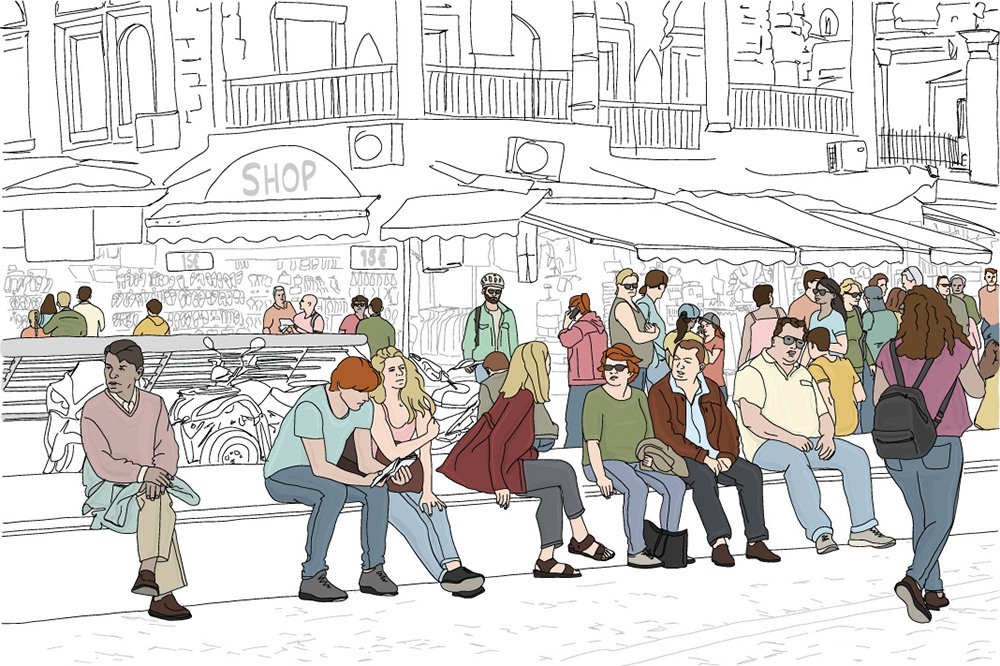RECOIL OFFGRID Preparation RECOILweb: Behavioral Cues for Avoiding a Fight
Editor’s Note: The following article was originally published in Issue 13 of CONCEALMENT, and appears here in its entirety with permission. For more articles on guns, training, and gear, go to RECOILweb.com.
One of the preeminent facets of self-defense is situational awareness. Unfortunately, those two words have become a catch-phrase-turned-mantra beaten to death by nearly every book, video, instructor and Internet forum about personal protection. But so much of the talk about situational awareness seems to be just people yelling at each other to make sure they have it. Rarely do we see a concise, level-headed, repeatable explanation as to exactly what mental processes make up this mystical “awareness” and how exactly we use them to protect ourselves from potential threats.
In contrast stands Orbis Operations — a company that provides training and support services to government agencies and military units around the country. Among their offerings is a set of classes on Situational Awareness Training. This training is based off a process that Orbis refers to as Human Behavior Pattern Recognition & Analysis. There are several variations of their SAT curriculum, including a five-day SOFSAT or Special Operations Forces Situational Awareness Training. We had the opportunity to attend a couple days of SOFSAT and came away with a much better understanding of exactly what situational awareness consists of and how we use it to our advantage.

“Any behavior, whether from an individual or a group, which breaks from an established baseline qualifies as an...

The Orbis website has this brief header on it: “All individuals give off signals when they are measured against context, relevance, and the local societal baseline. In certain circumstances, these ‘signals’ can, with the proper training, be read as anomalies. Establishing a baseline, detecting (and then acting on) these anomalies is the essence of Situational Awareness Training…” In class, the instructors further refined this down into a concise, easy-to-remember formula they referred to simply as BAD, or B + A = D, Baseline + Anomaly = Decision. This is, in our opinion, the crux of the Orbis methodology. So let’s break down this formula and see how one is able to go about living it.
Baseline
The baseline of any given social group or geographic area is, in short, what is normal. But since normal can sometimes be a touchy word to define, maybe it’s better to say that the baseline of an area is what is habitual. What are the attitudes, actions, and overall behavioral patterns that constitute the routine tempo of the world around you?
To avoid any vagaries or generalizations, the instructors at our SOFSAT class outlined six individual facets, or domains, of situational awareness:
Heuristics: Heuristics are “mental shortcuts” that can be used when other information is limited to influence a snap-decision and help prime you for action as necessary. This may be explained by the old phrase “if it walks like a duck…” or Occam’s Razor which, very loosely translated, says that the simplest answer is most likely the correct answer.
Proxemics: How people interact with each other in groups. This could include things like how far or close people stand while interacting, if people in a group all seem to focus on or mimic the demeanor of one individual or if certain individuals routinely travel with an entourage of followers.
Geographics: How people interact with their physical terrain. This can be particularly important in natural gathering places like parking lots, stadiums, stores, and street corners that may be claimed as “turf” by criminal actors.
Atmospherics: Atmospherics is the overall “feel” of a place — the sights, smells, sounds, and general demeanor. For example, if we asked you to close your eyes and imagine a carnival, we’re guessing your mental picture might include flashing lights, bells ringing, people screaming on rides, the smell of fried food and an overall air of excitement or joy. Those inputs, and the overall feeling they create inside you, make up the atmospherics of your surroundings.
Biometrics: Biometric cues are more focused on an individual and their body’s response in connection to their interactions. Are they sweating, is their skin flushed, are their pupils dilated, can you see the pulse pounding in their neck or the vein popping out of their forehead? These are biological indicators of a feeling or an intention that a person may be attempting to hide under the surface.
Kinesics: Kinesics is about body language. Separate from biometrics, which deal in the body’s automatic responses, kinesics focuses on physical movements. Things like cracking your knuckles, stretching, rubbing the back of your neck or “grooming gestures” like consistently stroking your face or wiping your nose could all be kinesic indicators of something being not-quite-right.

It’s safe to say that the interaction between these two people isn’t pleasant. But how we know could be a...
All of these six domains are like pieces of a puzzle. A thorough understanding of every domain will give you the fullest, most complete picture of your neighborhood, patrol beat or area of operations. But, as with a partially completed jigsaw puzzle, you don’t necessarily need every piece in place to figure out what the picture is.
Anomalies
Any behavior, whether from an individual or a group, which breaks from an established baseline qualifies as an anomaly. Some can be really subtle, while others are blatantly obvious. But neither one will do you any good if you’re not attuned to them. One of the easier types of anomalies to quantify is the proxemics pull/push. A proxemic pull or push is any stimulus that causes people to gather or disperse outside of regular patterns. When you’re driving home and you pass an accident on the side of the road with a group of people pulled over on the side of the road standing around, that’s a proxemic pull — the car crash has literally drawn people to it and created a crowd who wouldn’t normally be there. Likewise, a mosh pit breaking out at the front row of a concert may cause a proxemic push, causing everyone else to drift quickly away from their assigned seats to avoid a stray elbow to the head.
A geographic anomaly may be as simple as walking across a dark parking lot and noticing a tightly knit trio of people huddled in a pocket of shadow beyond the street lamp. Everyone else is walking directly to or from the store, but this one group of individuals just seems to be hovering in an area that most people simply transit without stopping.

The goal of Orbis Operations’ Situational Awareness Training is to understand the nature of a threat before it gets...
Other anomalies are much more discreet. One of the most fascinating examples we heard from SOFSAT went something like this: you’re walking down the street when a man approaches you and asks for directions. While you’re trying to remember the street names, he begins rubbing the back of his head and neck. Might just be a stiff neck. But inside your brain is a small gland called the hypothalamus. It controls automatic functions in the body like blood pressure, heart rate, and alertness. It’s a stress indicator. When a fight-or-flight response occurs, the hypothalamus heats up and begins to work overtime. He’s literally getting hot under the collar. Watching somebody begin to rub the back of their neck or head — when measured against other cues — may actually indicate that they’re preparing for a fight you don’t know is coming.
Having said all this, there are vast numbers of individual behavioral anomalies that could be identified in any given situation and people often exhibit seemingly “odd” or “abnormal” behaviors for perfectly good, benign reasons. So how do you process this running mental calculation to avoid going through life in a state of tweaking paranoia?
Decision
There are a couple of different mental processes you can execute once you’ve established a baseline and spotted an anomaly. The framework of this article is Orbis’ own B + A = D procedure. Now that you’ve arrived at a decision point, what can you (or should you) decide do to? Our instructors put forward a three-prong answer to this question. You can act, report, or continue to observe.
Above: When you look at this drawing, try to imagine the background noises, smells, or spatial encroachment associated with navigating a tight crowd. Without even knowing it, our brains carry a portfolio of pre-programmed templates for how “normal” social situations should look at feel. These are part of what we use to establish baselines.
The “act” decision can be any range of things from drawing your concealed pistol to simply taking a different route home, or waiting to stop for gas until you’re in a better neighborhood. Reporting options may include notifying a police officer or security guard, or your chain of command if you’re a first responder. Finally, keeping an eye on the situation for further developments is indeed a legitimate option. While you don’t necessarily need all the information to take action, you still need enough information. What that threshold is will be different for every person and every situation. One caveat to this that was advised to us during our training was that you must take action if you observe three anomalies in any domain or combination of domains.
The science of behavioral analysis is one of the most effective self-defense tools you can have in your skillset. But just like any skill, you must build a proper knowledge base and then practice it consistently. Orbis Operations teaches different versions of their Advanced Situational Awareness (ASAT) curricula to various government and commercial entities across the country. There are also a number of books available on the subject. Just check your local Internet search bar. We may not be able to prevent danger from entering our lives but, with some well-studied awareness and analysis, we’ll have a much better chance to see it coming.
 STAY SAFE: Download a Free copy of the OFFGRID Outbreak Issue
STAY SAFE: Download a Free copy of the OFFGRID Outbreak Issue
No Comments